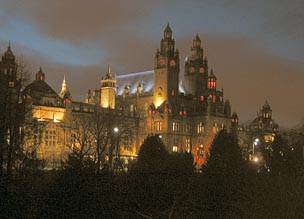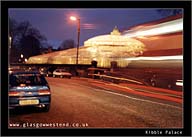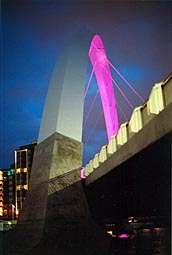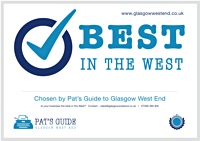Is Glasgow's West End on the move again?
The West End of Glasgow is an institution. It is where the cognoscenti come out to play, and find themselves mixing with students, thespians, arrivistes and the proletariat. It is the city's Bohemia.
As befits such a culturally diverse and socially exciting area, it never stays the same for long. Over the years, its hub of hip restaurants and entertainment venues has moved up and down Byres Road like a partygoer looking for a taxi. But now the West End may be about its most dramatic transformation ever, as an unusual combination of factors push and pull its centre of gravity towards a destination which is as yet undetermined. The only certainty is that change is underway again.
The most influential effect on the tides of change - and the restructuring of the hospitality and catering sectors within the area - is the ongoing creation of a "media village" on the other side of the Clyde on the old Garden Festival site, to the south and east of the West End.
Media group SMG, radio station Xfm and sports giant Setanta have already decamped there and the BBC, with all its concomitant spending power, is packing up in its Queen Margaret Drive headquarters in readiness for a move next year. Media people are naturally likely to gravitate towards the West End, with its plethora of bars and restaurants. They can bike across the Bells Bridge past the SECC or drive across the new "Squinty Bridge" further up the river.
Already this is having an effect on the Argyle Street corridor between Finnieston and the spectacularly renovated Kelvingrove Art Gallery and Museum, which itself is attracting a high-spending clientele. The hospitality offering here has been greatly improved, with a number of new style bars and smart restaurants.
 But there is pressure from the West as well, with proposals for a new development in the Castlebank Street area which may see as many as 600 new student flats and associated supermarkets and shops. And to the south, there is the great project of Glasgow Harbour, whose whole raison d'etre is to supply a housing demand from young urban professionals. Where they go, bars and restaurants are quick to follow.
But there is pressure from the West as well, with proposals for a new development in the Castlebank Street area which may see as many as 600 new student flats and associated supermarkets and shops. And to the south, there is the great project of Glasgow Harbour, whose whole raison d'etre is to supply a housing demand from young urban professionals. Where they go, bars and restaurants are quick to follow.
So what is the likely effect of this confluence of demographic shift? In the not too distant past, the exciting end of Byres Road was at Partick Cross, where traditional bars such as Wilson's metamorphosed into Leonardo's and then Bar Milano; where Colin Barr had The Living Room; where Gordon Yuill gave way to the Baby Grand; and where the new flats on the south side of the cross have their own bar/restaurant, the 501.
Few would argue that the epicentre of the area is now in what Glasgow's tourist department calls The Lanes, of Ashton and Dowanside. Here a new style of mass leisure tourism - new to Glasgow anyway - is thriving, with venues such as G1 Leisure's Gong and The Loft and, at the top of the road, Colin Beattie's innovative and successful church conversion, Oran Mor. Near the Lanes, on Byres Road, successful ventures such as Paperino's West End have made a substantial impact.
Will the focus move south again, to cater for the new developments? Will the Botanic Gardens end of the area start to feel the pinch? Or could a third, and previously, unconsidered, possibility be realised - that the market will expand to such an extent that existing and new ventures can operate profitably. Economics argue against this; if a market is finite, so is the scope for expansion. But what if the new market for the West End comes from the city centre, which is already suffering from issues concerning drunkenness and violence?
The West End, by contrast, is perceived to be a safe place for a night out. Its mix of stylish bars and cafes, upmarket restaurants and bistros and European, outdoor seating create an environment which could be considerably more attractive than a raucous, drinks promotion-oriented city centre. However, the lesson of the Merchant City should be kept in mind. An explosion of upmarket flats in converted warehouses there did not translate immediately into a bustling social scene. Licensed ventures blossomed and faded like spring flowers and it took nearly a decade for the district to settle into a cohesive whole.
 All the ingredients are in place in the West End, but it might take a while yet before the dish is ready.
Alan Gordon is a Partner in DM Hall, specialising in leisure and commercial property.
All the ingredients are in place in the West End, but it might take a while yet before the dish is ready.
Alan Gordon is a Partner in DM Hall, specialising in leisure and commercial property.








